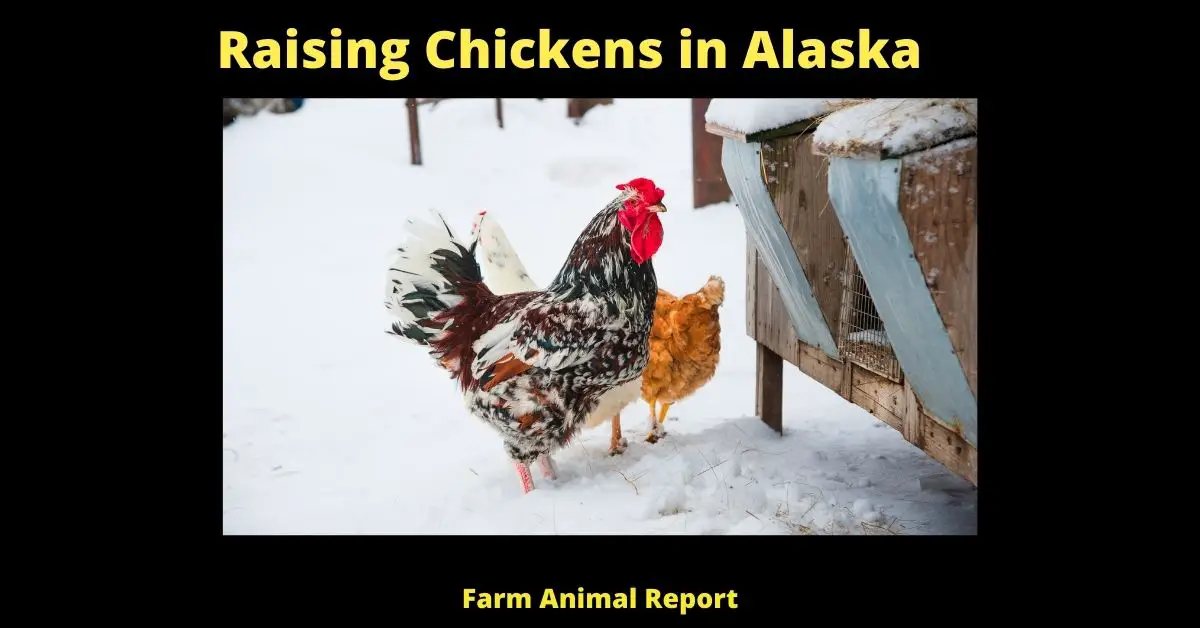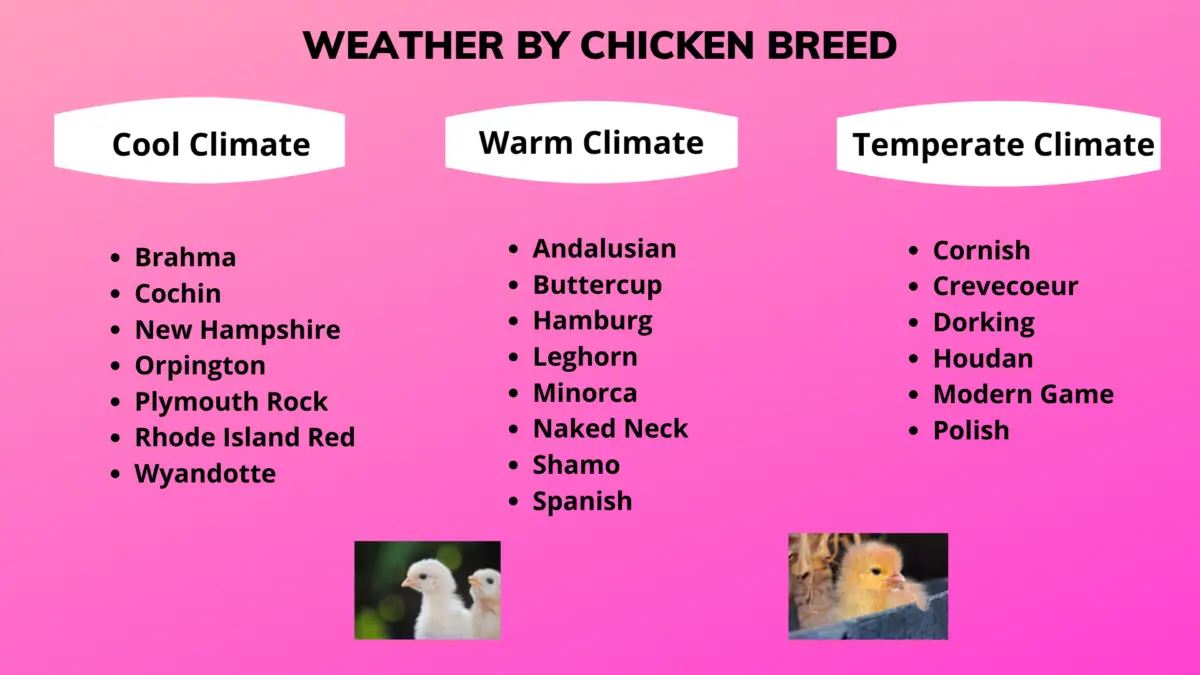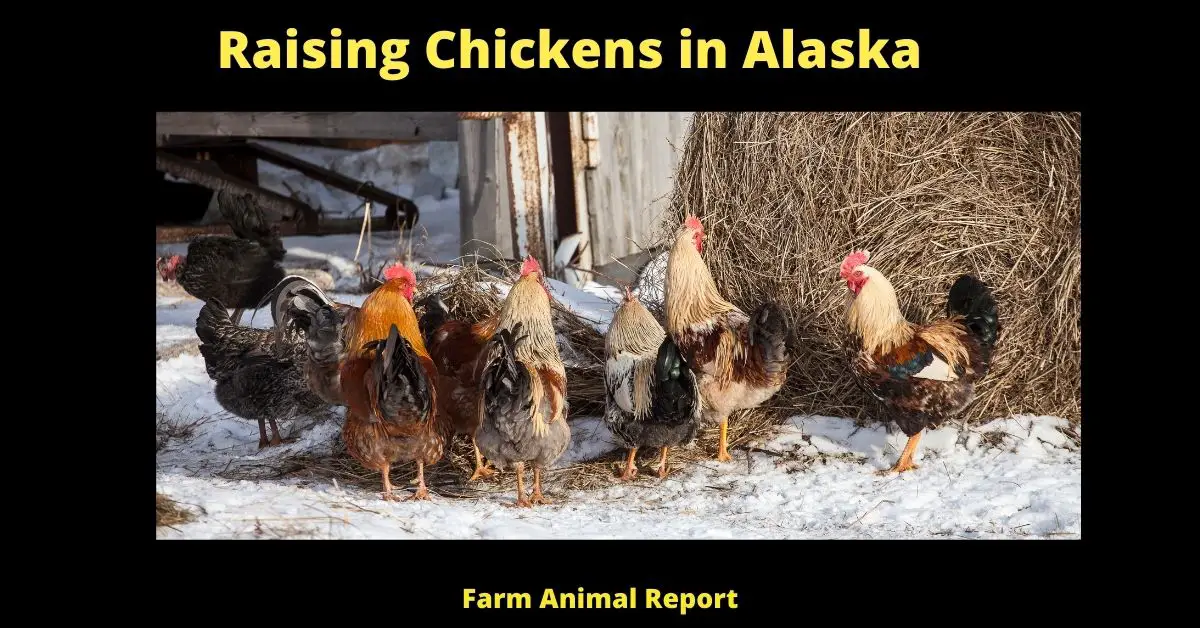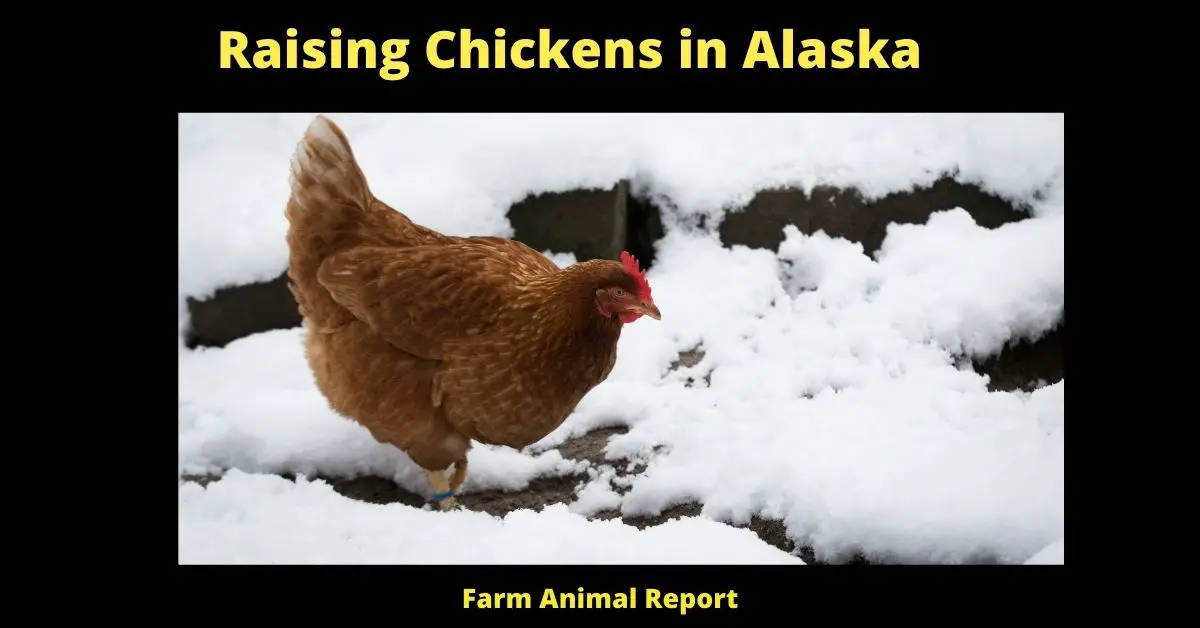Raising Chickens in Alaska
If you are looking for a new and exciting way to spend your summer, consider raising chickens in Alaska! Raising Chickens can be a fun and rewarding experience, and it is a great way to get fresh eggs year-round. In this blog post, we will discuss the basics of chicken farming in Alaska, including where to buy chicks, how to build a coop, and what to feed your chickens.
What do you Need to Know before you start Raising Chickens in Alaska
Raising Chickens in Alaska has its own unique challenges:
- Extreme Cold – One of the biggest challenges you will face when raising chickens in Alaska is the extreme cold weather. The average winter temperature in Alaska is around 20 degrees Fahrenheit, so you will need to make sure your chicken coop is well-insulated and has a heat lamp to keep your chickens warm.
- Extended Daylight – Another challenge of Raising Chickens in Alaska is the extended daylight hours during the summer months. Chickens need 14-16 hours of darkness per day to lay eggs, so you will need to provide them with a dark place to sleep during the long days of summer.
- Extended Night – During the winter months, Alaska experiences extended periods of darkness, which can be tough on chickens. Make sure to give your chickens access to a light source during the long winter nights to help them stay warm and healthy.
- Fresh Water – One of the most important things you need to provide your chickens is freshwater. In Alaska, this can be a challenge because of the extreme cold weather. You will need to make sure your chicken coop has a water heater to keep the water from freezing, and you will also need to change the water regularly to prevent it from becoming frozen. Raising Chickens in Alaska

What are the Benefits of Raising Chickens in Alaska
- Remote Housing – Raising Chickens in Alaska is a great way to get fresh eggs year-round, even if you live in a remote area.
- Eggs – Raising chickens is a great way to get fresh eggs year-round. Eggs are a nutritious and delicious food that can be used in many different recipes.
- Fertilizer – Chicken manure is an excellent natural fertilizer for your garden.
- Self-sufficient – Raising chickens can help you become more self-sufficient and less reliant on store-bought food.
- Fresh Meat – If you want to raise chickens for meat, Alaska is a great place to do it. The cold weather makes it easier to keep your chickens healthy, and the long days of summer allow your chickens to grow quickly.
What are the Best Chickens for Alaska?
The best Cold Weather Chicken Breeds are:
Ameraucana
This breed is known for its hardiness in cold weather and its ability to lay blue or green eggs. Ameraucanas are a great choice for Alaska because they are easy to care for and they produce high-quality eggs.
Rhode Island Red
This breed is known for its ability to withstand cold weather and its red plumage. Rhode Island Reds are a good choice for Alaska because they lay large, brown eggs. They are also relatively easy to care for, making them a good choice for beginner chicken farmers.
Sussex
This breed is known for its docile temperament and its ability to lay large, brown eggs. Sussex chickens are a good choice for Alaska because of their hardiness in cold weather. They are also a good choice for beginner chicken farmers because they are relatively easy to care for.
Orpington
This breed is known for its large size and its ability to lay large, brown eggs. Orpingtons are a good choice for Alaska because they are relatively easy to care for and they produce a high-quality egg.

What kind of Coop do you need for your Chickens?
Your chicken coop should be:
Well-insulated – As we mentioned before, the average winter temperature in Alaska is around 20 degrees Fahrenheit, so you will need to make sure your chicken coop is well-insulated. You can insulate your chicken coop with straw, hay, or even old blankets.
Heated – You will also need to make sure your chicken coop has a heat lamp to keep your chickens warm. Heat lamps are available at most hardware stores, and they are relatively inexpensive.
Ventilated – It is important to make sure your chicken coop is well-ventilated to prevent your chickens from getting sick. Chickens produce a lot of ammonia, which can be harmful if it builds up in the coop. Make sure there are plenty of vents in the coop to allow for proper ventilation.
What other Challenges come with Raising Chickens in Alaska?
- Predators – In addition to the challenges we’ve already mentioned, you may also need to deal with predators such as foxes, coyotes, and bears. It is important to make sure your chicken coop is well-built and secure to protect your chickens from predators. You may also want to consider getting a dog to help protect your chickens.
- Frozen Water – One of the challenges you may face is frozen water. Chickens need water to drink and if their water source freezes, they will not be able to drink. You will need to make sure you have a way to keep their water from freezing. One way to do this is to use a heated chicken waterer.
- Egg Laying – Another challenge you may face is with egg laying. Egg production is triggered by daylight and in Alaska, there are long periods of darkness during the winter months. This can cause your chickens to stop laying eggs or lay fewer eggs than usual. Auxillary Lighting is needed
- Extreme Cold – The extreme cold temperatures in Alaska can also be a challenge for chickens. They can get frostbite on their combs and wattles (the fleshy protrusions on their heads). To help protect them from the cold, you can provide them with a warm place to sleep and make sure they have access to food and water.
- Wind Chill – The wind chill in Alaska can also be a problem for chickens. They can get frostbite on their combs and wattles (the fleshy protrusions on their heads). To help protect them from the wind chill, you can provide them with a warm place to sleep and make sure they have access to food and water.
Free-Ranging Chickens in Alaska
Many Homesteads in Alaska like to free-range their chickens
Some of the reasons are:
- No Close Neighbors – In Alaska, it is not uncommon to have large tracts of land with no close neighbors. This can be a benefit if you want to free-range your chickens because there are no close neighbors who may complain about the noise or smell.
- Free Chicken Feed – One of the benefits of free-ranging your chickens is that they will have access to food sources that you may not have on your property. They will also get exercise which is important for their health.
- No Pesticides – If you are concerned about the use of pesticides, free-ranging your chickens is a good way to avoid them. Chickens will eat insects and other small animals which helps control the pest population on your property.
- Noise is not a problem – In Alaska, there are often many sounds that are louder than chickens, so they will not be a problem.
- Odor is not a problem – Chickens do not have a strong odor and the smell of their droppings is not noticeable.
- Flies are not a problem – Chickens eat flies and other insects which helps to keep the fly population down.
- Waste control is not needed – Chickens will scratch the ground and help to aerate the soil. Their droppings are also a good source of fertilizer for your plants.
- You can use your Chickens for pest control for your other livestock – Chickens will eat insects and other small animals which helps control the pest population on your property.
- They are a good source of fresh eggs – One of the benefits of having chickens is that you will have a constant supply of fresh eggs.
- They are a good source of meat – If you want to raise chickens for meat, free-ranging them is a good way to do it. They will get exercise and eat a variety of foods which will make them healthier and tastier.

Common Chicken Diseases in Alaska and How to Treat Them
Some of the Common He3alth issues in Alaska are;
Chickens are susceptible to a number of diseases and parasites. Some of the more common chicken diseases include:
- Fowl pox: A viral disease that causes lesions on the skin, mouth, and throat of chickens. It is spread through contact with infected birds or their droppings. Fowl pox can be prevented by vaccinating your chickens.
- Infectious bursal disease: A highly contagious viral disease that affects the immune system of young chickens. Infectious bursal disease can be prevented by vaccinating your chickens.
- Newcastle Disease: A viral disease that causes respiratory, nervous system, and gastrointestinal symptoms in chickens. It is spread through contact with infected birds or their droppings. Newcastle disease can be prevented by vaccinating your chickens.
- Salmonella: A bacterial infection that can cause diarrhea, vomiting, and fever in humans. It is spread through contact with infected birds or their droppings. Salmonella can be prevented by practicing good hygiene and sanitation practices.
If you suspect your chicken is sick, contact a veterinarian for diagnosis and treatment. Early detection and treatment of chicken diseases are important for the health of your flock.
Common Parasites that affect Chickens include:
- Mites: Tiny parasitic insects that feed on the blood of chickens. Mites can cause anemia and skin irritation in chickens. They are treated with insecticide dust or sprays
- Lice: Wingless parasitic insects that feed on the feathers and skin of chickens. Lice can cause anemia, weight loss, and decreased egg production in chickens. They are treated with insecticide dust or sprays.
- Worms: Internal parasites that live in the digestive tract of chickens. Worms can cause diarrhea, weight loss, and decreased egg production in chickens. They are treated with wormers.
If you suspect your chicken has parasites, contact a veterinarian for diagnosis and treatment. Regular deworming and mite/lice control is important for the health of your flock.
Tips for keeping your Chickens Healthy and Happy in the Cold Alaskan climate
Some quick tips for raising Chickens in Alaska are:
- Give them extra food. Chickens need more food to generate body heat in the winter.
- Make sure their water doesn’t freeze. Provide a heated water dish or bring fresh water to them daily.
- Provide shelter from the wind and cold. Chickens are susceptible to frostbite, so make sure they have a warm, dry place to sleep at night.
With a little bit of care, you can successfully raise chickens in Alaska!
Final Thoughts – Raising Chickens in Alaska
Raising chickens in Alaska can be a challenge, but it is also a rewarding experience. If you are up for the challenge, we encourage you to give it a try! We hope this guide has been helpful and that you have learned everything you need to know about raising chickens in Alaska





